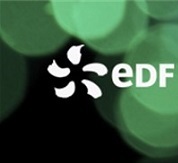Behaviours, technologies and markets: the influence of the (p)rebound effect, the energy efficiency gap and refurbishment market heterogeneity on energy demand dynamics
Résumé
The modelling of long-term energy demand dynamics is of prime interest for energy policy design and energy infrastructure planning. The two main modelling approaches (bottom-up and top-down) of dynamics demand simulation have well-known drawbacks: a lack of behavioural realism for the first and a lack of technological explicitness for the second. The main challenge of our work is to build a simulation model of residential energy demand dynamics that is both realistic regarding household behaviour and the overall housing refur-bishment market while ensuring a sufficient level of technological precision. The following elements of realism have been implemented in our bottom-up model, ranging from end-users to the provision chain: • Household energy use: people do not use energy as it is usually described in engineering models, rather they adopt energy saving practices when the energy service price is high (prebound effect), and relax their efforts when energy efficiency is improved (rebound effect). • Household investment in energy efficient technologies: investment decisions are not solely based on techno-economic analyses but also on non-energy benefits (e.g. comfort or estate value), capital constraints and individual preferences. • Refurbishment markets: information problems lead to energy-efficiency barriers, including the low visibility of energy efficient equipment prices (which are notoriously heterogeneous within the market). Moreover, price and efficiency dynamics depend on technology diffusion (techno-logical learning). This model has been applied to two "Factor 4" scenarios-one that is technologically driven (diffusion of energy efficient and low-carbon technologies) while the other is economically driven (high carbon tax)-to analyse how an enhanced integration of realism influences simulated energy dynamics. Results highlight the fact that it can dramatically change the dynamics of consumption, making it a crucial point for policy makers and utilities.
| Origine | Fichiers éditeurs autorisés sur une archive ouverte |
|---|
Loading...

